Google Webmaster Tools is a goldmine for marketing and content departments, generating an array of data that will help you craft an intelligent SEO campaign.
Even if you’re already using Google Analytics, you need Webmaster Tools. In fact, I check both every day for my websites. Analytics looks at who’s already coming to your site and what they’re reading. Webmaster Tools lets you see your site as Google does, pointing out problems with the crawl, code or links. The differences is that Analytics allows you to gather data on your current audience, while Webmaster Tools helps you form strategic campaigns to bring attract new audience prospects.
Webmaster Tools can give you information such as keyword ranking data, traffic trends based on content, keyword insights, and even Google Authorship statistics. The data is easy to download, so you can manipulate it to analyze trends and find opportunities.
To get started, verify that you are the site owner. It’s a simple process, and it’s even easier if you’re already using Google Analytics or hosted by an “approved” provider such GoDaddy.
Once you’re verified, login and follow along to start exploring the rich data that awaits.
1. Search Queries
The Search Queries section shows current and average keyword rankings, as well as organic search impressions and click-through rate (CTR) for each keyword.
If you’re looking for trends, toggle “With Change” to see how your SEO campaign is performing over time, which looks something like this:
Analyze search query movement to see which keywords provide opportunities for low-hanging fruit (ie, ranking on the 2nd page of Google) or how certain efforts for a specific group of keywords are affecting rankings and CTR.
2. Traffic Patterns
Besides average position for the top search queries that eventually lead users to your website, Google Webmaster Tools also provides the average ranking position for individual pages on your website, including blog posts. This allows you to identify several valuable points of data:
- Which content is ranking best and worst
- CTR for each page of content
- Content with great CTR but a lower average ranking
Adjust the meta description tag on high-ranking content to get better CTR, and concentrate on link building for high-CTR content that’s not ranking very well, to boost its average position in search rankings.
The data are great for identifying what type of content or subjects get the most traffic and rank the best in search engines. For example, if video blogs or interviews always get the most traffic, adjust your content strategy to produce and publish more of them.
If controversial or attention-grabbing blog post titles translate into more impressions and a higher CTR, make a special effort to be more provocative with your content strategy.
3. Keyword Insights
When optimizing for specific keywords (which usually include industry-specific keywords relating to products and services), viewing search queries by individual keyword reveals which pages on your website are ranking the highest for that keyword. To view this data, simply click a keyword from the “Search Queries” table.
Use this information to understand which pages Google already thinks are most relevant on your website for each keyword. You can then further optimize these pages according to on-site SEO best practices, and strategically select which pages to focus on first in your SEO campaign.
Google Webmaster Tools also provides keyword metrics for the top traffic-getting pages your website:
Look at the keywords for your most-visited pages and use them in new content or link building campaigns. In addition, make sure the page actually contains all (or natural variations of) the top keywords that Google Webmaster Tools is reporting for that page.
4. Authorship Statistics
Google Webmaster Tools gives you data that goes beyond your site, thanks to Google Authorship. In the Labs section, you can view Author Stats to identify the search statistics for external posts for which you’re the verified author:
This is a great way to identify which of your articles is getting the most views, as well as their position in the search rankings and CTR. You’ll begin to see ideas for additional content for your own site.
For instance, if you wrote a popular post for the Huffington Post about the top productivity apps, an app round-up post or series on your site would probably generate interest as well. This is especially the case if similar posts get high traffic/impressions on a variety of sites where you contribute.
5. Site Speed Metrics
Website speed is becoming an increasingly important factor in Google’s ranking algorithm. There’s evidence that Google’s Hummingbird algorithm further prioritized site speed, especially when accessed from a mobile device, which is a strong indication of Google’s future direction with regard to the importance of site speed.
On August 16, 2013, SEO professional and web strategist Matt Storms revealed on Google+ that Google Webmaster Tools allows users to track GoogleBot download time. This is excellent for testing speed at a page-level, and getting metrics straight from the horse’s mouth (Google). To do this, access the “Crawl” menu, followed by “Fetch as Google.” Then, enter your URL and click “Fetch.” After a minute or so, Google will display your site’s loading speed.
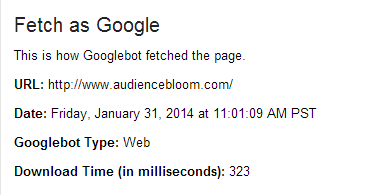 Anything below 500 milliseconds is acceptable. Anything above that mark, and impatient users will start leaving your site. As Wordpres becomes ever more popular as a CMS, WordPress-specific hosting is becoming a common and popular service offering, and it has been shown to improve site speed, according to WPExplorer.
Anything below 500 milliseconds is acceptable. Anything above that mark, and impatient users will start leaving your site. As Wordpres becomes ever more popular as a CMS, WordPress-specific hosting is becoming a common and popular service offering, and it has been shown to improve site speed, according to WPExplorer.Conclusion:
Through its search query, keyword analysis, authorship data, and site speed metrics, Google Webmaster Tools can give you the detailed data you need to maximize your SEO campaign. Its ability to track changes over time provides insight into the effectiveness of your efforts, as well as ways to further improve them.
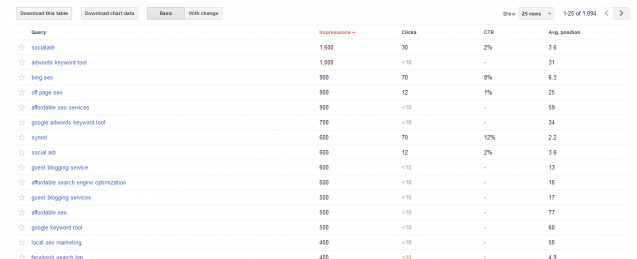

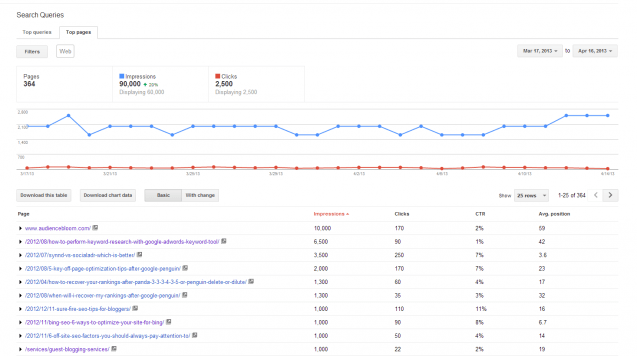
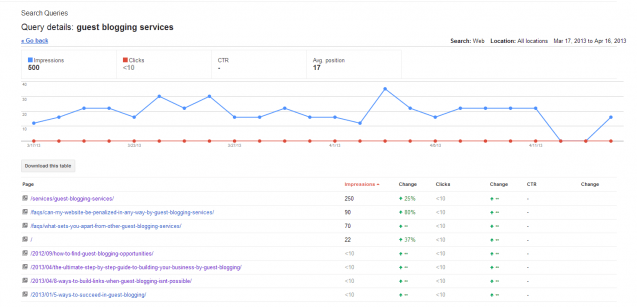
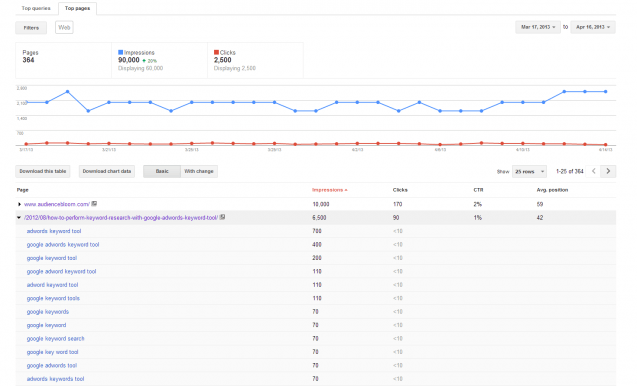
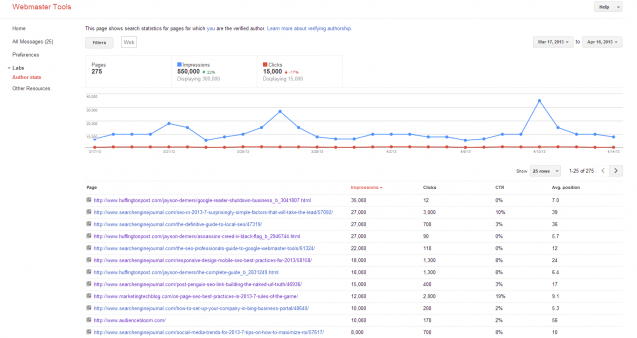
Google Webmaster Tools is a goldmine for marketing and content departments, generating an array of data that will help you craft an intelligent SEO campaign.free plagiarism checker
ReplyDeleteI am very grateful for this guide. You are a real SEO professional. Have you heard about this free online plagiarism checker? I recommend you to start using it. You definitely won't regret it.
ReplyDelete